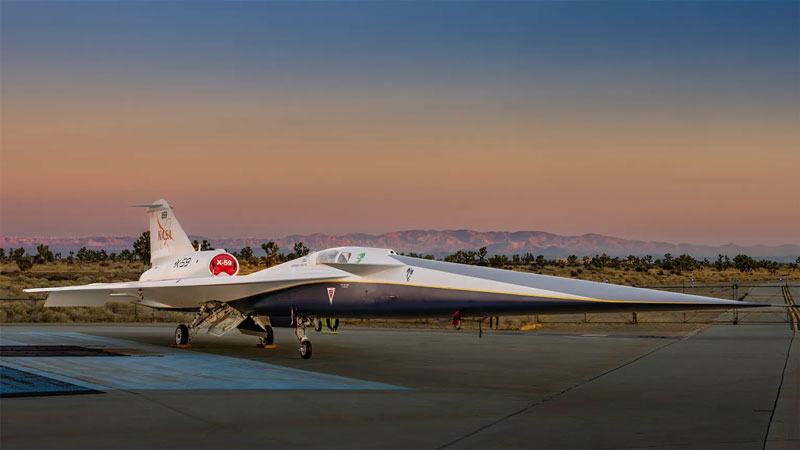NASA представило бесшумный сверхзвуковой самолет X-59 для гражданской авиации
Дата: 13.01.2024 19:40
Новости технологий
Сегодня в 00:00 по московскому времени NASA и Lockheed Martin впервые показали экспериментальный сверхзвуковой самолет проекта X-59. Самолет выполнен в белой раскраске с красными полосами на крыльях и эмблемой NASA. Этот самолет станет полигоном для практики бесшумного полета со сверхзвуковыми скоростями, что откроет путь к гражданской сверхзвуковой авиации без звукового загрязнения над городами.
The X-59’s first flight will take place later this year. Before this, it will undergo comprehensive testing of on-board systems and verification of compatibility with ground equipment. Then there will be taxiing along the runway, and only by the end of spring or early summer will the first flight take place. At the end of the tests, several American cities will be selected over which the X-59 will make test flights. NASA specialists will place noise sensors on the ground and after the flights will conduct a survey of the local population about the sensations experienced during the X-59 flights.
The collected data will be shared with regulatory authorities. It is believed that supersonic civil aviation could not develop due to the high level of noise created by the engines when breaking the sound barrier and during flights at supersonic speeds. Breaking the sound barrier with the X-59 aircraft will be no louder than a car door slamming, NASA reports. Future supersonic civil aircraft should not disturb people’s hearing even when flying overhead.
The X-59 aircraft is designed to test designs that reduce noise levels in flight. Almost a third of the aircraft’s 30.4-meter fuselage is occupied by the nose. For this reason, the cockpit is located almost in the middle of the aircraft, making it impossible to see ahead. In this direction the cabin does not even have glazing. External high-resolution cameras help the pilot navigate. At maximum speed, the X-59 will reach Mach 1.4 (1,715 km/h). This falls seriously short of the cruising speeds of the Tu-144 and Concorde, but is still more than twice as fast as the cruising speeds of modern airliners.